Why should you make the effort to visit the Northern Territory? The Australian Outback endures as a symbol of the rugged, remote reaches of the country; for many travelers, a visit to this iconic region holds romantic sway. Yet few first-timers spend more than a day or two in the Territory beyond Uluru (formerly Ayers Rock). Most pop in via a quick flight, check Uluru off their bucket list, and head back out to Sydney or the reef.
Yet, to truly grasp the rich, textured history of the region’s indigenous people; to witness the contrasts of colors and the changing moods of the landscape; to track, maybe photograph, the well-adapted, predominantly nocturnal wildlife; and to be moved by the rawness of this untrammeled wilderness, one needs to see the NT in its entirety. It can be done in a week, but ten days is ideal. Veering off the path will leave you reflecting on the greatness of the NT, and how valuable it, and the few primordial places left on earth, are. From the Red Center at Uluru, stretching 1800 km to the tropical Top End, no Australian itinerary should leave out the NT.
Enjoy the Outback in Style
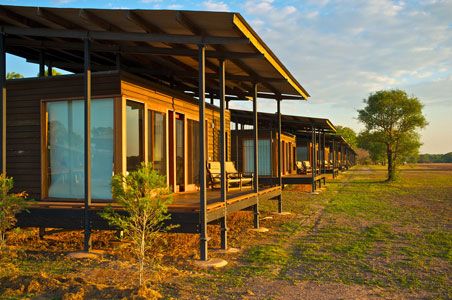
The NT was once the realm of backpackers and campervans, in part due to the anemic lodging options. What choices there were looked like utilitarian cabins reminiscent of summer camp, with insipid food options.
Nowadays, the well-heeled traveler can visit the Outback, but curl up under a duvet at night. Outside Uluru, a recent $30 million overhaul of Ayers Rock Resort’s flagship property Sails in the Desert, breathed new life into a tired space. Rooms and interiors are gorgeous, drawing on indigenous patterns in carpeting, textiles, plush bedding, and wall art. Sample regional cuisine and Australian wines at the property’s fine dining restaurant Mayu; or indulge in a four-course, under-the-stars Tali Wiru dinner (which means "beautiful dune" in local Anangu language.)
Recommended Fodor’s Video
Once you’ve reached the Top End, check-in to the Wildman Wilderness Lodge, two hours east of Darwin, and an hour from Kakadu National Park. Safari-style tents are pleasant when the weather is cool, but for the humid shoulder season, opt for the air-con Habitat Rooms, which are wood-and-glass, stand-alone modules on stilts, with a wall of windows from which to observe the wallabies at night. Food at the property is of high-quality (given the location), and nightly menus have local proteins like crocodile ceviche, kangaroo steak, and lamb.
Kings Canyon
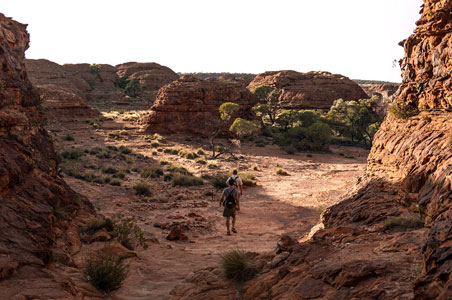
I met several travelers while hiking the 6 km rim walk of Kings Canyon who confessed to preferring the scenery and lack of tourist traffic of the Canyon to Uluru. It’s true, the Canyon, located inside Watarrka Park, is an undiscovered retreat—most tourists skip to the crown jewel down south. But the beauty of the sandstone cliffs, weathered formations like the Lost City, and desert anomalies like the Garden of Eden, a spring-fed oasis of exotic plants, gum trees, and prehistoric ferns, make it a crucial stop. For lodging, spend the night at the Kings Canyon Resort. Although pricey for what is essentially a 2-3 star motel, it’s the best option close to the park entrance.
Uluru-Kata Tjuta National Park

It’s not just a rock. It’s no longer named Ayers. And it’s spectacular. For tourists who visit this spiritual place on a quickie tour, however, and skip learning about its importance to the Aboriginal custodians; or worse, ignore the wishes of locals by climbing it, they may leave feeling they traveled thousands of miles for a giant monolith. Uluru deserves to be pondered: study the peculiarities of its face, touch the unique surface reminiscent of kiln-fired clay, walk the 10.6 kms around the base, spend an hour in the Cultural Center, and certainly don’t miss sunset and sunrise.
Kata Tjuta is another series of rocks a 45-minute drive further into the park. They are also remarkable in their oddity of location, formation, and sheer size. Often the site of sunset picnics, photographic opportunities abound as the rock’s color changes with the light.
The Ghan Train

Traversing the length of the NT was once the domain of bus tours, or intrepid independents willing to peregrinate the 1500 km stretch of Stuart Highway from Alice to Darwin, in a campervan. Why not take an overnight train instead; reduce the journey from days of mind-numbing driving, to 24-hours of open bar and white tablecloth dining.
Although the Ghan originates in Adelaide (or Darwin), it stops in Alice Springs to pick-up passengers. The entire transcontinental route is an epic 3-day, 2-night, 54-hour journey, covering 2,979 kilometers. Gold Class guests bunk in small double cabins (singles also available), while Platinum suites offer both a sitting area as well as proper double bed (Platinum is significantly more expensive.) Both fares are inclusive of alcoholic drinks, multi-course meals, and a boat trip into the beautiful Nitmiluk Gorge during a 4-hour stopover in Katherine.
Kakadu National Park
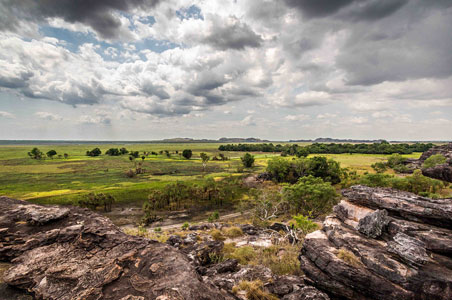
A world heritage site, the park covers nearly 20,000 square kilometers of gorges, flood plains, and wetlands. Visiting in one day is doable (I did it), but the vast space really deserves two or three days. Highlights include the Guluyambi boat cruise on the croc-infested East Alligator River near Ubirr. One of few tours utilizing Aborigines as guides, you’ll spot dozens of crocs, rock art, and learn about local culture. There are heaps of attractions in the park: billabongs, scenic vistas, rock art galleries, waterfalls, and bush hikes. Just remember—don’t swim in the waters of Kakadu. The region is rife with saltwater crocodiles that will eat you.
Aboriginal Art
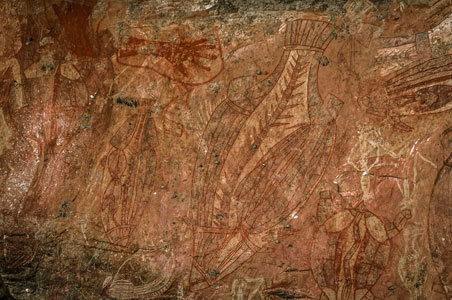
Kakadu National Park holds one of the highest concentrated areas of rock art in the world. As many as 5,000 Aboriginal sites have been found. Ubirr and Nourlangie are the most famous and accessible galleries in the park, Ubirr providing a veritable retrospective of Aboriginal history through paintings. The art is everywhere: bellies of boulders, the roof of cliffs, and on rock walls. Knowing how history turns out, glimpsing drawings of extinct animals such as the Thylacine or an Aborigine’s first sighting of a white man can make for unsettling viewing.
The Mary River Wetlands
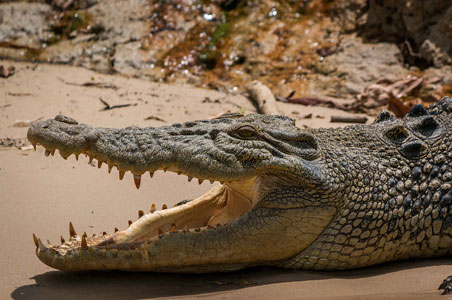
This wetlands system is arguably the Territory’s most beautiful; it also has the highest density of crocs in the world. The Wildman Wilderness Lodge sits on the fringe of the region’s flood plains, and is a perfect base for exploring the area. Utilize lodge tours to visit the nearby, permanent billabong. Cruise at dawn to view a wildlife documentary in motion: hundreds of birds fluttering, squawking, and swooping about, while salties (saltwater) and freshies (freshwater) crocodiles lurk beneath the water or sunbathe on the shore. Try to spot a long-legged Jabiru or blue-winged Kookaburra—both make their home here.
Litchfield National Park
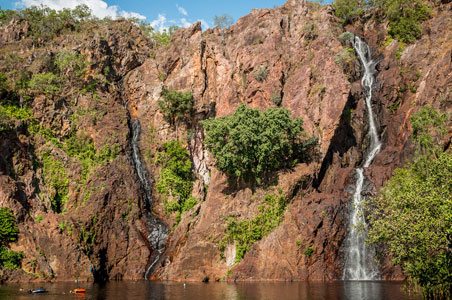
Looking for a swim in the wild? Visit Litchfield. Beloved by Darwin locals for an easy outing on hot days, this park, 1.5 hours from the city, features a multitude of waterfalls with plunge pools and rockholes sans the pesky (life-threatening) crocodiles. Rugged sandstone escarpments, spring-fed streams, termite mounds, and bushwalking trails provide a myriad of environments for outdoor enthusiasts to explore. Highlights include the double waterfalls and intimate plunge pool at Florence, set within an atmospheric monsoon forest. Wangi Falls is the granddaddy, and most popular, with a swimmable plunge that feels like three Olympic-sized pools in one.
The Milky Way

Our home galaxy can be seen from many nighttime vantage points across the planet, but at none have I beheld the glow of this white stretch of universe so brilliant. The lack of light pollution in the center of the desert, thousands of miles from civilization, allows for incredible stargazing. Guests at any Ayers Rock Resort can take advantage of nightly viewing sessions with a constellation expert and telescope.
Photo credits: Milky Way via Dreamstime.com; All other photos courtesy of Lauren Mowery


